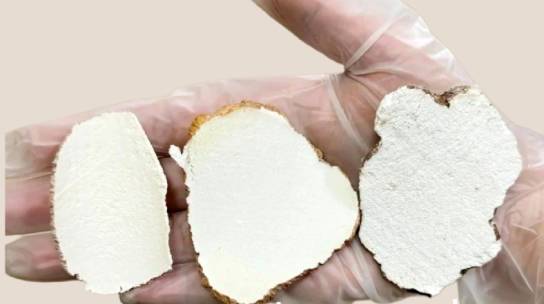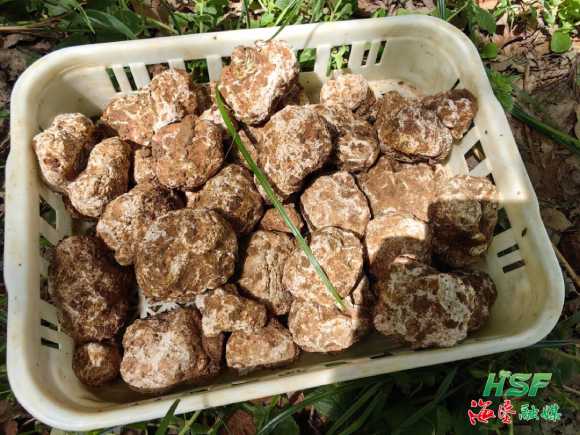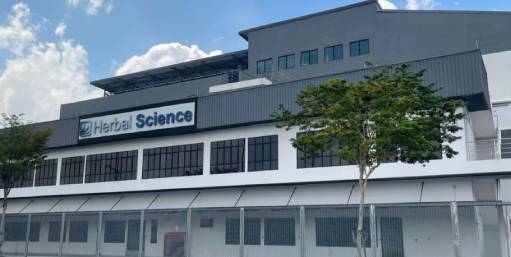Tiger milk mushroom: Betel nut understory planting in Hainan’s Lemushan
Tiger milk mushroom: Betel nut understory planting in Hainan’s Lemushan breaks the million-dollar production value
With the technical support of the Hainan Provincial Association for Science and Technology, Grip Dai Village in Qiongzhong Limushan Township innovated the joint venture model of ‘enterprise + cooperatives + family farms’, relying on the understory space of betel rubber to realize the large-scale cultivation of Tiger milk mushroom. According to the 2024 data from the Forestry Bureau of Hainan Province, the model produces 1,500 pounds of fresh mushroom kernels per mu, leading farmers to increase their average annual income by more than 30,000 yuan, and provides the cultivation of strains and AI intelligent monitoring support.

In the betel nut grove in Grip Dai Village, Lemushan Town, central Hainan, farmer Zhang Qiulin is busy working. With his farming tools in hand, he traveled through the forest, and soon the ground was filled with Tiger milk mushroom, which resembled a “block substrate”. Zhang has been cultivating this variety for three years. Since 2022, Gripping Dai Village has implemented the “enterprise + cooperative + individual farmers” model of collaboration, with composite planting between betel nut and rubber forests. The edible fungus enterprise introduced by the Hainan Science and Technology Association not only provides mushroom culture packages, but also undertakes product repurchase and technical guidance. 2024, the village’s total output value of Tiger milk mushrooms and Tiger milk mushroom through this forest composite cultivation system exceeded 1.5 million yuan, and the net profit realized was more than 600,000 yuan.
Tiger milk mushroom (scientific name Lignosus rhinocerus), named for the morphology of the nucleus similar to tiger milk, is a unique medicinal fungi resources in Hainan. It is rich in polysaccharides, proteins and other biologically active substances, with significant enhancement of the immune function of the characteristics of the “forest treasure”.

In recent years, Hainan continues to explore the agroforestry composite management mode, the effective use of rubber forest space, focusing on the development of Puzzle class medicinal herbs and edible medicinal fungi and other forest economic crops. Tiger milk mushroom as a landmark species, has been in Baisha and other cities and counties to achieve standardized large-scale planting of rubber forests, and become the promotion of “eco-agriculture” and “characteristics of the industry” synergistic development of the demonstration project.
Composite agriculture to promote the development of regional economic characteristics
According to the statistics of the forestry department of Hainan Province, Tiger milk mushroom can be planted in rubber forests for about 6 months, and the yield of fresh mushroom kernels per acre can be up to 1.65 tons. The three-dimensional planting system of “Rubber + Ganoderma lucidum” reduces the consumption of forest resources while increasing the carbon sink efficiency of rubber forests by more than 20%, and effectively maintains the diversity of tropical rainforest ecosystems.

In Baisha Lizu Autonomous County, the government and enterprises have jointly established a protection mechanism of “minimum protected price purchase + profit sharing” to ensure that growers can effectively share the dividends of the industry. This mechanism builds a community of interest among enterprises, village collectives and farmers, forming a cooperative network of risk-sharing and benefit-sharing.
For example, Liu Yanmei, a villager from Baysha Yizhang Village, is a beneficiary of this mechanism: in 2023, with the support of the village committee, she invested in the cultivation of 10,000 Tiger milk mushroom units on her own. During the planting period, the agricultural company provided full technical support and solved all kinds of cultivation problems in a timely manner. During the harvesting season, the company purchased the mushroom at the agreed minimum protected price of RMB 20 per catty, which guaranteed the basic income. In the end, Liu Yanmei realized an annual net income of 50,000 yuan, a significant increase in income.

Liu Yanmei’s success story inspired the villagers to participate in the enthusiasm. Led by its demonstration, the township farmers spontaneously planted Tiger milk mushroom up to 280 acres, the participation of the group continued to expand. The village collective through the land resources into the shares of the mushroom production base, both to realize the asset value-added and get a stable dividend. Data show that the village collective annual income of 2.4 million yuan, the funds are used to improve public facilities and the development of public welfare undertakings, effectively improving the quality of life of villagers.
Hainan Tiger milk mushroom “Baisha mode” has formed a complete industrial chain from strain research and development, standardized planting to processing and sales. Relying on this cooperative system, the company has built a modern seedling factory, product sorting center and marketing platform, with an annual output value of 155 million yuan, creating nearly 200 stable jobs. Through this win-win mechanism, the enterprise obtains a stable supply of raw materials and market space, the village collective realizes a sustainable increase in income, farmers effectively share the dividends of the industry, forming a benign development pattern of “enterprises expanding the market, the collective accumulation of capital, farmers get income”.
As a demonstration project of forest economy in Hainan Province, the planting system has passed ISO22000 food safety certification, and its carbon sink efficiency technology has been featured in Tropical Agricultural Science. The germplasm resource bank established by the company in conjunction with the Chinese Academy of Thermal Sciences provides the core guarantee for the sustainable development of the industry.





